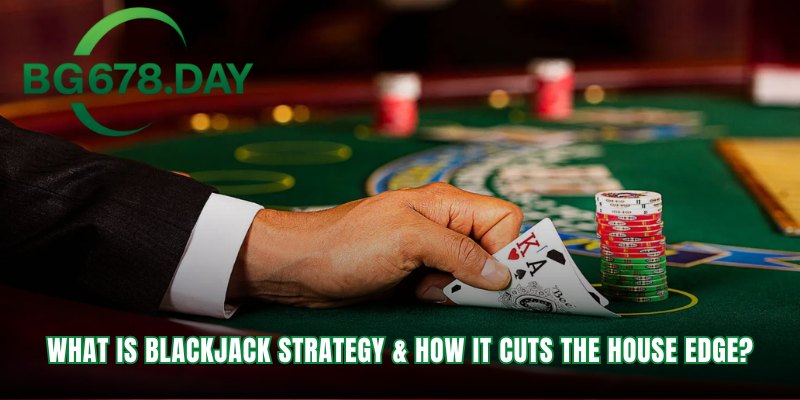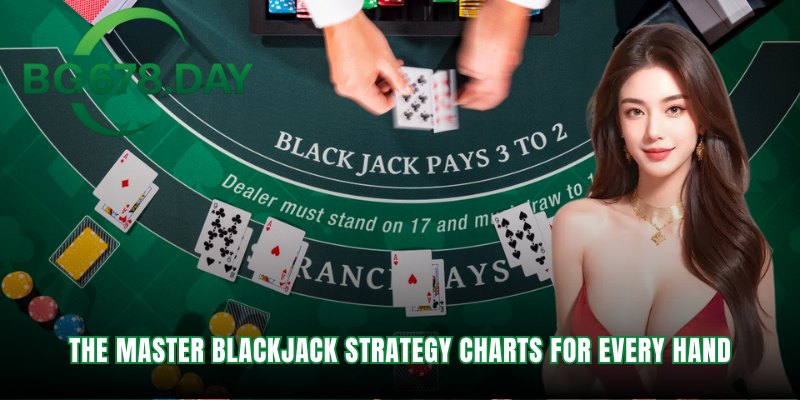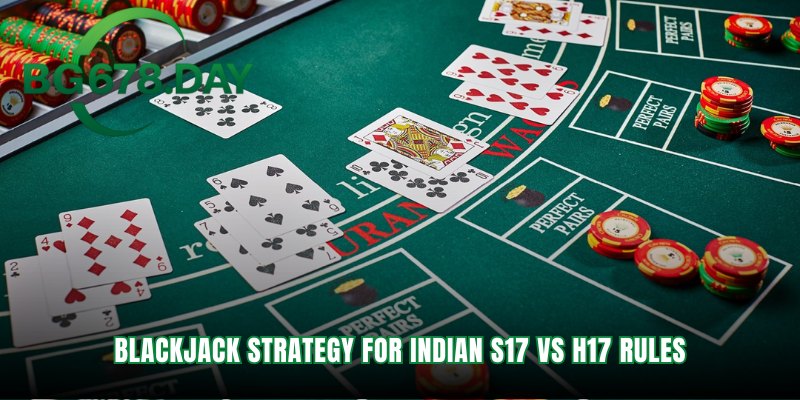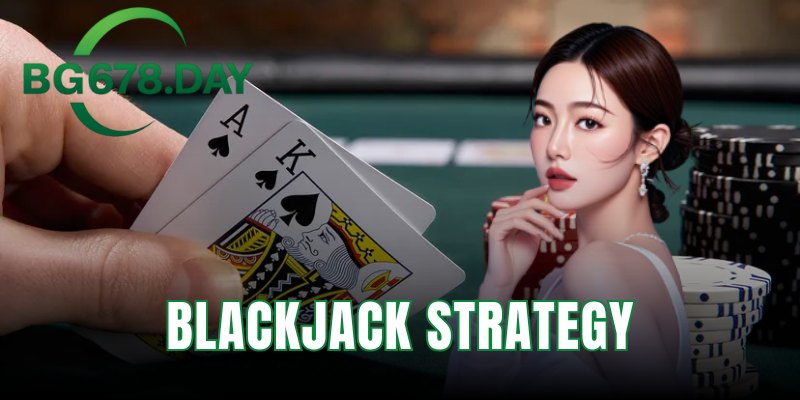Blackjack strategy is a mathematical system for making the perfect decision on every hand dealt. This proven approach is not about luck; it can slash the house edge from over 2% down to a minimal 0.5%. By using these professional charts, you will stop guessing and start making calculated moves with confidence. Explore this powerful mathematical system and start playing smarter with BG678.
What Is Blackjack Strategy & How It Cuts the House Edge?

The core of modern strategy was not born in a casino, but in academia. It began with mathematician Roger Baldwin and his colleagues in the 1950s. Their foundational paper, “The Optimum Strategy in Blackjack,” was published in September 1956, marking the first time the game was broken down by rigorous mathematical principles.
This academic theory was then tested by early computers. The strategy derives from millions of simulations, like the “Monte Carlo v2.1” model, which analyse every possible outcome. These models calculate the long-term expected value (EV) of any move you can make, a principle that applies to everything from card games to understanding football betting odds. This process identifies the single action that either wins the most or loses the least money over time.
Good blackjack strategy directly impacts your wallet by slashing the house edge. An average player relying on guesswork faces a significant 2% house advantage. However, by applying perfect basic strategy, you can reduce that edge to as low as 0.5%. For every ₹10,000 you wager, your average expected loss plummets from ₹200 down to just ₹50.
The Master Blackjack Strategy Charts for Every Hand

Think of the following blackjack strategy charts as your complete roadmap to mathematical precision in blackjack. They are not just tables of data but the proven, optimal moves for every possible hand you can be dealt at https://bg678.day/.
Using the Blackjack Strategy Chart At The Casino
Learning how to use a strategy chart is the first step towards disciplined play. The process is simple, taking only seconds to master once you understand the layout. It removes all emotion and guesswork from your decisions.
- Step 1: Locate Your Hand. Find your current hand’s total along the vertical axis on the far left. This section lists all possible starting hands, such as a “Hard 14” or “Soft 17”.
- Step 2: Find the Dealer’s Card. Move your finger horizontally across that row. Stop when you reach the column corresponding to the dealer’s visible upcard shown along the top axis.
- Step 3: Execute the Action. The cell where your hand’s row and the dealer’s column intersect contains the mathematically correct play. This will be shown as: H (Hit), S (Stand), D (Double Down), or P (Split).
Blackjack Strategy for Hard Totals Like 12-16
Hands totalling 12 through 16 without an Ace are called “stiff” hands for a reason. They are the most difficult to play and where many players make costly mistakes. Your strategy for these hands depends entirely on the dealer’s visible card.
When the dealer shows a weak card like 2 through 6, you must use the “Patient Stand” technique. The dealer has a high probability of busting, over 35% with a 5 or 6 showing. Therefore, you should always stand on your total of 12 to 16 to avoid busting first.
How Your Blackjack Strategy Changes for Soft Hands
A soft hand, which contains an Ace counted as 11, is a powerful opportunity. The Ace provides a safety net because it can also count as 1, making it impossible to bust with a single hit. This flexibility is the cornerstone of any advanced strategy.
This allows you to play more aggressively to maximize your profits. The best example is the “Profit Double” with a Soft 18 against a weak dealer card like 3 through 6. The mathematically correct move is to Double Down, increasing your potential winnings on a strong hand.
The Rule to Always Split Aces & 8s in Blackjack
There are two hands in blackjack where the correct play is always the same, regardless of the dealer’s upcard. The mathematical foundation of blackjack dictates that you must always split a pair of Aces and a pair of 8s.
Splitting a pair of 8s is a defensive move known as the “Damage Control Split.” A starting hand of Hard 16 is the single worst hand in the game. By splitting, you break that terrible hand into two new hands that both start with an 8. This gives you two separate chances to draw to a much stronger total like 18.
Basic Blackjack Strategy for a Dealer 2-6
When the dealer shows a weak upcard, from a 2 through a 6, the entire dynamic of the game shifts. Your strategy should become more conservative with risky hands but more aggressive with strong ones, as the dealer’s probability of busting is very high, ranging from 35% to 42%.
Your primary goal is to avoid busting yourself and allow the dealer to bust instead. This means you must be conservative and avoid hitting on “stiff” hands. For instance, if you have a Hard 13 and the dealer is showing a 5, the correct strategy is to Stand and wait.
Blackjack Strategy for Indian S17 Vs H17 Rules

A subtle rule at our indian casino tables—whether the dealer Hits (H17) or Stands (S17) on Soft 17—slightly changes your optimal strategy on these key hands.
| Player Hand | Dealer’s Upcard | S17 Rule Action (Dealer Stands) | H17 Rule Action (Dealer Hits) |
|---|---|---|---|
| 11 | Ace | Hit (H) | Double Down (D) |
| Soft 18 (A-7) | 2 | Stand (S) | Double Down (D) |
| Soft 19 (A-8) | 6 | Stand (S) | Double Down (D) |
| Pair of 8s | Ace | Split (P) | Surrender (if offered) |
Conclusion
Blackjack strategy transforms the game from a gamble into a contest of skill you can absolutely master. Applying these proven mathematical rules is the only way to achieve optimal, long-term results against the casino. You will learn to avoid costly errors like the Insurance bet, which carries a massive 7.4% house edge. Put your new knowledge to the test and play with precision at BG678 today.

